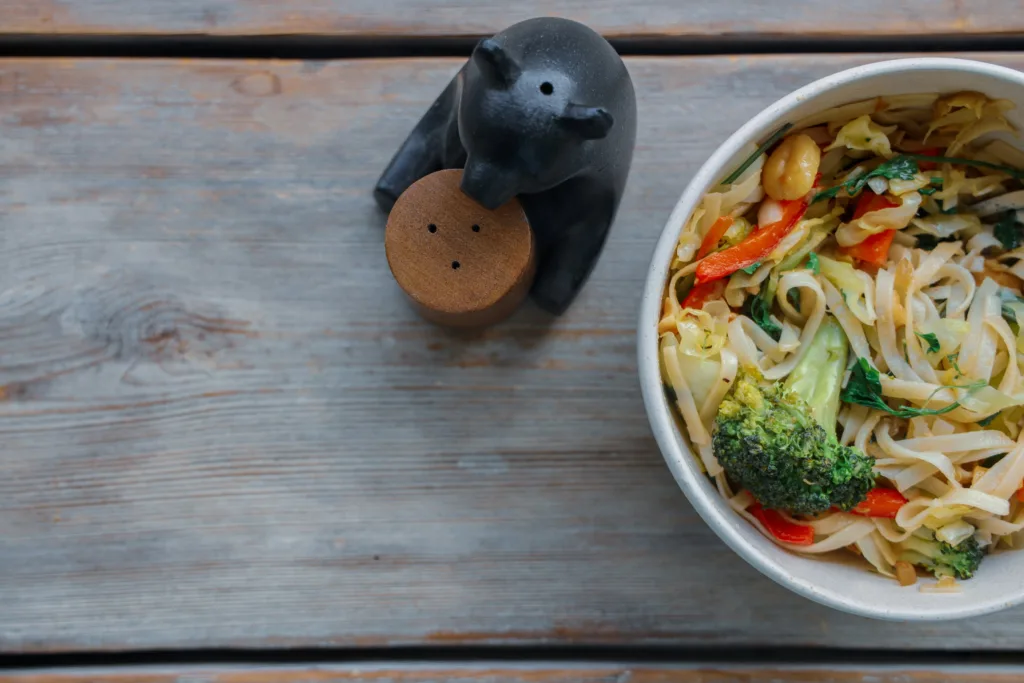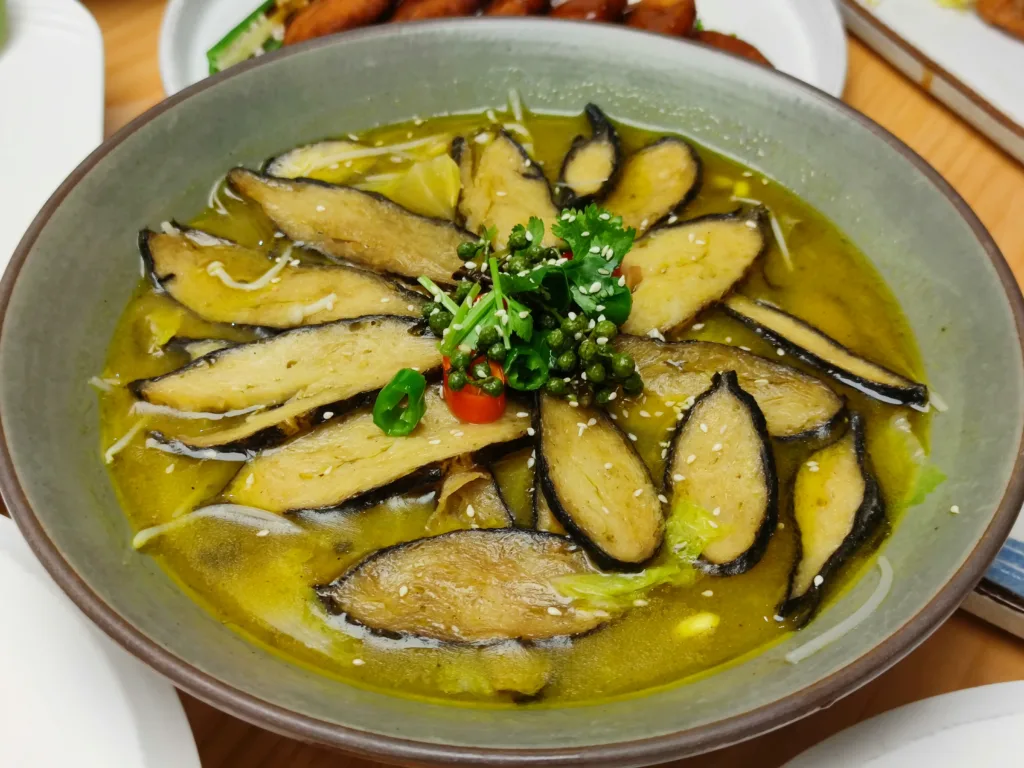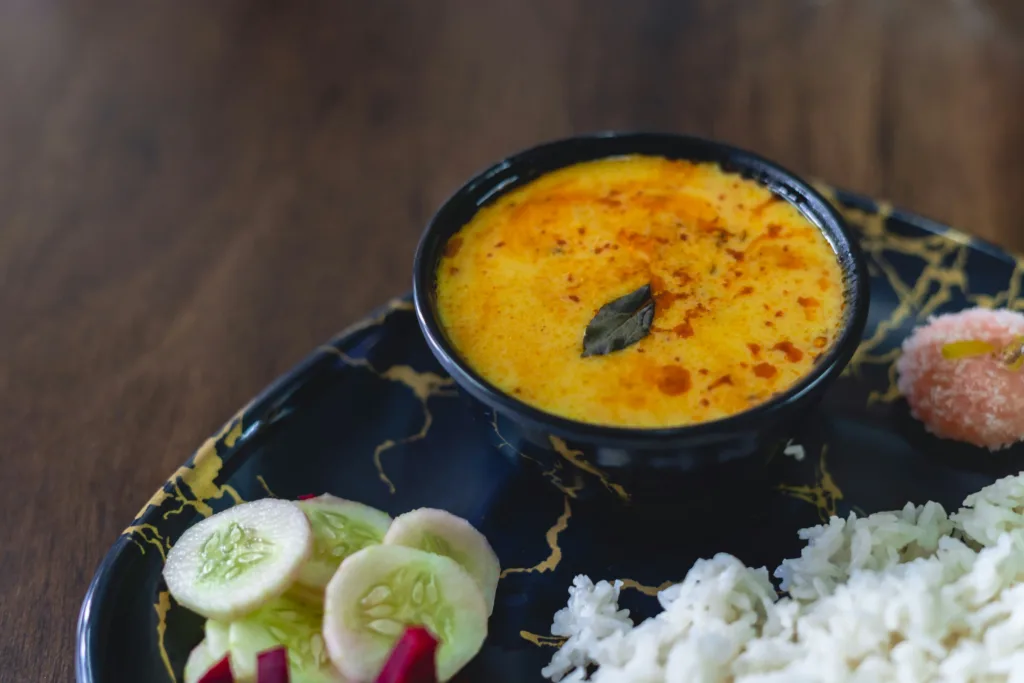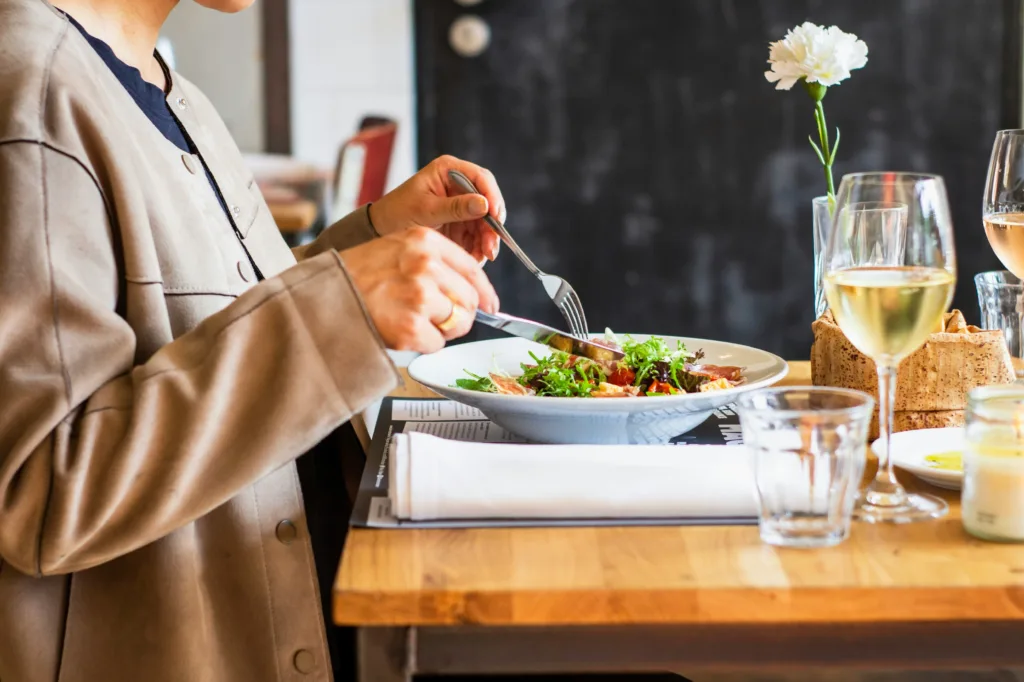Eating more plants doesn’t have to mean overhauling your entire kitchen or committing to bland salads every day. Whether you’re already vegetarian or just looking to cut back on meat, having a go-to meal plan can save time, reduce decision fatigue, and make your week feel way more organized. We’ve pulled together a realistic 7-day vegetarian meal plan that balances nutrition with ease – including breakfast, lunch, dinner, and snack ideas, plus prep tips and a grocery list to tie it all together.
At ReciMe, we’re all about making everyday food feel more doable. Whether you’re testing out meatless Mondays or going full vegetarian, we help you collect recipes from Instagram, TikTok, Pinterest, and more, build meal plans around what you actually want to eat, and organize your grocery list so it matches your store layout. Grab ReciMe now, power up your nutrition, and let’s get into this veggie-packed week.


What Is a Vegetarian Meal Plan?
A vegetarian meal plan is basically your weekly food lineup – just without the meat. That means no beef, no chicken, no fish. But everything else? Still on the table. Think lentils, tofu, chickpeas, grains, eggs, veggies, nuts, and dairy (if you’re not going vegan).
Some people go fully plant-based. Others just want to cut back on meat a few days a week. There’s no one “right” way to do it. The key is having a plan that gives you options you’ll actually eat – not a fridge full of kale and regret.
A solid vegetarian plan doesn’t just remove meat. It makes sure your meals still have flavor, balance, and enough protein to keep you going. When you’ve got recipes picked, snacks ready, and groceries already in the kitchen, you’re not scrambling at 6 p.m. or defaulting to whatever frozen thing is buried in the back of the freezer.

Health Benefits of a Vegetarian Diet
Going vegetarian isn’t just about cutting out meat – it’s about adding more of the stuff that actually makes you feel good. More fiber, more plants, more meals that fuel you without the crash. And the research backs it up. Even if you’re not fully plant-based, eating vegetarian more often has real benefits.
- Better for your heart: Swapping meat for veggies, beans, and whole grains? That can help lower cholesterol and blood pressure – two big markers for heart health. Basically, your arteries will appreciate the break.
- Less risk of chronic stuff: People who eat mostly plant-based tend to see lower rates of type 2 diabetes, certain cancers, and inflammation-related issues. It’s not a magic cure – it’s just real food doing what it’s supposed to do.
- Easier to manage your weight: Vegetarian meals tend to be high in fiber and lower in calories, which means they help you feel full without leaving you sluggish. You’re less likely to snack on junk if your meals are actually satisfying.
- Your digestion will thank you: More fiber = things move better. It’s that simple. Legumes, fruit, veggies, and whole grains help keep your gut running like it should.
- More steady energy: Balanced vegetarian meals give you slow-burning carbs, healthy fats, and plant-based proteins. That means fewer sugar crashes, less reaching for an extra coffee at 3 p.m., and more consistent energy.
- It’s good for the planet too: Less meat on your plate = lower environmental impact. Even a couple plant-based days a week can shrink your carbon footprint without making your life harder.
You don’t have to go all-in to feel a difference. Start where you are, add more plants, and see how it works for you. No rules, no pressure – just food that supports how you want to feel.

Sample 7-Day Vegetarian Meal Plan
Meal planning always sounds like a good idea – until it’s 6 p.m., you’re hungry, and your fridge has a half-eaten cucumber and questionable yogurt. That’s where this 7-day vegetarian plan comes in. No extremes, no all-day cooking sessions. Just real meals you can actually make – and eat – without a ton of effort.
This plan includes breakfast, lunch, dinner, and snacks. Some ingredients repeat on purpose (because you don’t need five different types of greens going bad in your crisper). It’s built to be flexible – swap in what you’ve got, skip what you don’t, and make it work for your routine. Let’s get into it.
Day 1: Simple Start, Low Effort
Breakfast
A bowl of warm stovetop oats cooked in water, topped with fresh raspberries and a generous shake of cinnamon. It’s cozy, filling, and tastes like effort – even though it takes ten minutes, tops. Double the batch so you’re set for later in the week.
Morning Snack
One crisp apple. Straightforward, reliable, and easy to eat at your desk or while scrolling TikTok. If you’ve got peanut butter on hand, even better.
Lunch
A whole-wheat wrap loaded with hummus, shredded carrot, cucumber slices, lightly sautéed baby spinach, and a few slices of avocado. It’s crunchy, creamy, and surprisingly filling. Add a little lemon juice or hot sauce if you want it to hit harder.
Afternoon Snack
Half a cup of plain Greek yogurt with sliced strawberries. It’s light but balanced – the protein keeps you from crashing, and the berries add just enough sweetness.
Dinner
Mushroom-quinoa veggie burgers, either prepped earlier or store-bought (zero shame). Top them with a quick yogurt-mustard sauce and serve with greens or roasted sweet potato wedges. Comfort food that feels like a real meal, not just a placeholder.
Day 2: When the Prep Starts Paying Off
Breakfast
One banana-nut oatmeal cup (baked over the weekend), plus a clementine. Great if you’re heading out the door in five minutes or eating between meetings.
Morning Snack
A handful of raspberries stirred into plain Greek yogurt. Fresh, light, and easy to throw together when you need something that doesn’t take effort.
Lunch
Lemon-roasted veggie bowl with farro or quinoa and a scoop of hummus. Roasted zucchini, bell peppers, onions, carrots – whatever you have. The hummus pulls it all together and makes it feel like a full dish.
Afternoon Snack
Two peanut butter energy balls (each about 15-20g, made with 1 tsp peanut butter per ball). Make a batch, stash some in the freezer, and pull out as needed. Sweet, chewy, satisfying – they’ll save you from diving into snacks that don’t actually fill you
Dinner
Butternut squash and black bean tostadas, topped with shredded lettuce, diced tomatoes, salsa, and 1-2 tablespoons of shredded cheese or dairy-free cheese. Toast the tortillas in the oven so they’re extra crisp.
Day 3: Midweek, Minimal Thinking
Breakfast
Another oatmeal cup plus a medium apple. Still works. If you want to switch things up, stir in almond butter or top with pumpkin seeds.
Morning Snack
Hard-boiled egg with sea salt and black pepper. One of those snacks that just works – protein, no mess, and keeps you full.
Lunch
Leftover veggie bowl from earlier in the week. Honestly, roasted veggies taste even better after a day or two in the fridge. No decisions needed.
Afternoon Snack
Half a cup of fresh raspberries, or swap in grapes if that’s what’s hanging around.
Dinner
One-pot tomato basil pasta made with canned tomatoes, garlic, broth, and dried basil – everything cooks together. Add olive oil and shredded parmesan at the end. Easy, cozy, and one pan to clean.
Evening Snack
Two more energy balls. They keep well and feel like a treat.

Day 4: Lean on Leftovers, Keep It Moving
Breakfast
Oatmeal cup again + an apple. If you’re feeling oatmeal fatigue, this is your permission to switch to toast or a smoothie.
Morning Snack
Another hard-boiled egg. You knew this day was coming.
Lunch
Last of the roasted veggie bowl. Add extra hummus, top with a soft-boiled egg, or wrap it in a tortilla to mix it up.
Afternoon Snack
Clementine – peel and eat. No cutting board needed.
Dinner
Stuffed baked potatoes with black beans, salsa, shredded cheese, and a dollop of plain Greek yogurt or sour cream. Add green onions or avocado if you want to level it up. Feels a little indulgent, but still hits the balanced-meal mark.
Evening Snack
Energy balls again – and if they’re gone by now, make more.
Day 5: Comfy but Still On Track
Breakfast
Avocado toast on hearty grain bread with a squeeze of lemon and chili flakes. Add a poached or soft-boiled egg if you’ve got five extra minutes. Bonus points for a clementine on the side.
Morning Snack
Leftover berries or whatever fruit needs to be eaten today. You know the one.
Lunch
Grain bowl with brown rice or quinoa, leftover roasted veg, and a boiled egg or chickpeas. Drizzle with tahini or your favorite vinaigrette. It’s the kind of “whatever’s in the fridge” meal that always ends up tasting better than planned.
Afternoon Snack
One apple. You’re probably tired of hearing about apples. But you’re also not tired of eating them.
Dinner
Vegetarian tikka masala with brown rice. Use a jarred sauce or whip up a quick one with tomato paste, coconut milk, and some garam masala. Serve with naan if you’ve got it, or just call it a night with what you have.
Day 6: Minimal Effort, Still Eating Well
Breakfast
Oats again, this time with cinnamon and raspberries. You know the drill. Stir in almond butter if you want a little more heft.
Morning Snack
Apple. Not exciting, still reliable. Add a few almonds if you want to mix it up.
Lunch
Veggie wrap with hummus, greens, roasted veg, and whatever cheese or protein you’ve got left. This is the fridge-clear-out lunch, and it always works.
Afternoon Snack
Energy balls. Still good, still doing their job.
Dinner
Black bean tacos with avocado, lettuce, salsa, and tomato. Toast your taco shells, hit them with lime juice, and you’ve got a meal that feels like more effort than it was.
Day 7: Reset and Recharge
Breakfast
Oats made with half milk, half water, topped with chopped apple, walnuts, and cinnamon. Basically tastes like breakfast apple pie – with fiber.
Morning Snack
Raspberries and 10-12 almonds – sweet, crunchy, and enough to carry you through to lunch
Lunch
Leftovers. Tikka masala, grain bowl remix, another wrap – keep it simple.
Afternoon Snack
Last boiled egg or whatever snack scraps are left. Time to clean out.
Dinner
Curried chickpea stew with brown rice or naan. It’s hearty, affordable, and perfect to make a little extra for tomorrow’s lunch.
You don’t have to follow this plan to the letter. Mix it up, swap ingredients, skip what doesn’t fit. This is just a structure to help you get through the week with fewer decisions and more meals that actually feel like meals.

Vegetarian Meal Prep Tips
Meal prep doesn’t have to be an all-day event. A few small steps can save you from dinner burnout and help you eat better without overthinking it. Here’s what actually works when you’re cooking vegetarian:
- Cook one grain for the week: Make a big batch of something like quinoa, brown rice, or farro. Keep it plain so it fits into anything – bowls, stir-fries, wraps, even breakfast. One pot on Sunday = meals half done.
- Roast a tray of whatever’s in your fridge: Zucchini, carrots, bell peppers, broccoli – chop ’em, toss with oil and salt, and roast. Done in 25 minutes. You can add them to pasta, layer in wraps, or just eat them cold with dressing.
- Make one solid main to stretch across meals: Think chickpea stew, veggie curry, lentil soup, or tofu stir-fry. Something hearty that holds up well. Eat it fresh one night, then pack leftovers for lunch or freeze a portion for later.
- Prep a couple easy snacks: Hard-boiled eggs, chopped-up fruit, energy bites, or pre-portioned nuts. Nothing fancy – just something you’ll actually grab when you’re hungry between meals.
- Keep a sauce or two on hand: A quick tahini dressing, yogurt with lemon and herbs, or even a jar of pesto. It makes plain meals way more exciting. Keep it in a jar in the fridge and use it all week.
- Don’t stress about labels or perfect containers: Unless you’ve got a full household or a memory like a sieve, you probably don’t need to label every single container. Just aim to use up the older stuff first so nothing goes to waste.
- Set the bar low – and win anyway: If you’ve prepped one grain, one veg, and one main, you’re already ahead. No need to prep 21 meals or look like an Instagram reel. This is about eating well without the hassle.
What If You Live With a Meat-Eater?
Trying to stick to plant-based meals when your roommate, partner, or family member is still Team Bacon? Yeah, it’s a thing – and no, you don’t need to play short-order cook every night.
The simplest approach? Build meals that can go either way. A grain bowl with roasted chickpeas for you and grilled chicken for them. Stir-fry with tofu in one pan, shrimp in the other. Pasta with veggie sauce that can handle a sprinkle of sausage (or not). No drama, no extra hours in the kitchen – just flexible meals that work for both sides.
It doesn’t have to be a battle of food philosophies. You’re not convincing anyone to join a tofu cult – just eating your way, while making it easy for them to eat theirs. Keep a few go-to meals in your back pocket that split easily, and dinner becomes less of a standoff and more of a system.
Conclusion
Eating vegetarian isn’t about tossing everything you know about cooking – it’s more like tweaking your usual meals with different ingredients and a bit of prep. Whether you’re doing it for your health, the planet, or just to feel a little better at dinner, having a plan in place makes things way less chaotic. You get more variety, fewer last-minute “what’s for dinner?” panics, and honestly, less food ending up in the bin.
And no, it doesn’t have to be all or nothing. You can start with one or two meat-free days a week and build from there. A couple of solid meals on repeat is enough to get going. The goal isn’t perfect eating – it’s just making your routine a little smoother and your plate a little greener.
FAQ
1. Do I need to eat soy or tofu to follow a vegetarian diet?
Nope. If you like tofu or tempeh, great – but you can also get plenty of protein from beans, lentils, eggs, dairy (if you eat it), nuts, seeds, and grains. There’s more than one way to build a plant-based plate.
2. Will I get enough protein?
Yes, if you’re eating a mix of plant-based foods. Chickpeas, lentils, quinoa, yogurt, eggs, nuts – it all adds up. Most people get more protein than they think, especially when meals are balanced.
3. Is this plan good for weight loss?
It can be – but that depends on your portions, habits, and how active you are. The meals are built to be satisfying without being heavy. If you’re focusing on fiber, balanced snacks, and not skipping meals, it’s a solid place to start.
4. What if I don’t like cooking every day?
You really don’t have to. Make a couple big batches on the weekend – grains, roasted veggies, a stew or stir-fry – and just rotate them through the week. It’s meal prep without the pressure.
5. Can I do this if I live with meat-eaters?
Absolutely. Base meals like bowls, tacos, and pastas are super easy to customize. Add beans or tofu to yours, grilled chicken to theirs – done. You’re not cooking two separate meals, just branching off the same starting point.
